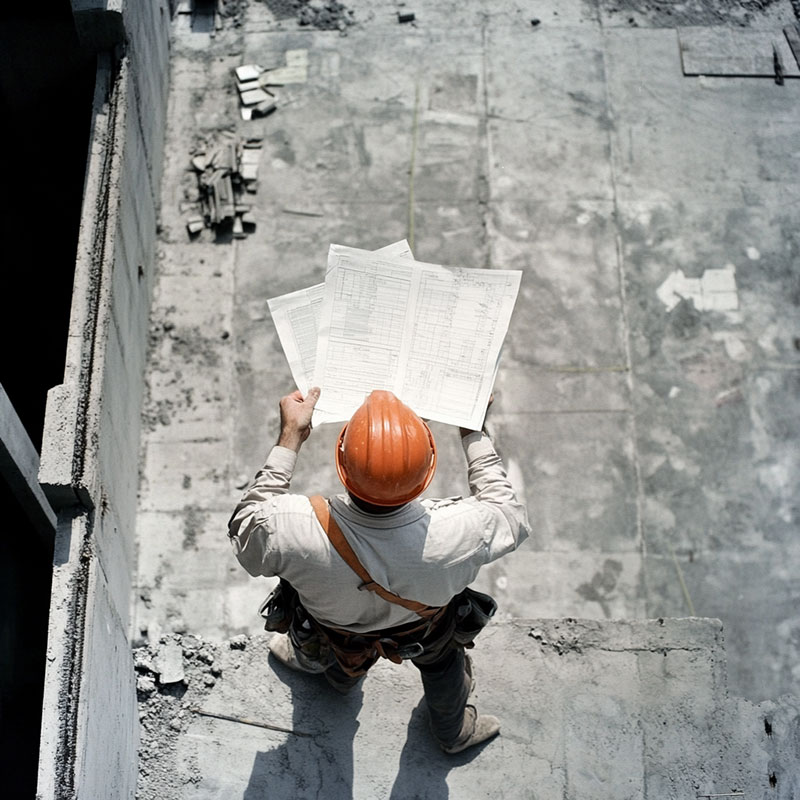Construction waste removal in Tallinn and Harju County
A professional solution for property managers
Did you know that improperly managed construction waste can lead to fines of up to €32,000?
At the same time, the average property manager in Harjumaa spends more than 15 hours a week organising the logistics of construction waste. How successful property managers in Tallinn and Harju County are preventing these problems.
- What are the critical challenges related to the removal of construction waste that could jeopardise your project’s budget and deadlines?
- How to choose a reliable construction waste removal service provider that understands the specific needs of property management.
- What are the hidden costs that should be considered when choosing a construction waste removal service and how to avoid them?
A challenge for property managers
Artur Veski manages a mid-sized property management company in Tallinn with a portfolio of 12 commercial properties and over 30 apartment buildings. When a major renovation of one of the commercial buildings he manages began, he could not have foreseen that the management of construction waste would become the most problematic part of the project.
“We thought that the removal of construction waste was a natural part of the work that would take care of itself,” recalls Artur. “Reality hit us when the renovation came to a standstill for two weeks because construction waste blocked access to the next phase of the work. At the same time, tenants lodged complaints and the local authority issued a warning about illegal waste management.”
This crisis experience taught Artur that the removal of construction waste is not a marginal issue, but a critical component of a project that requires a professional approach.


Construction waste collection and the hidden challenges of management
Arthur’s management company faced specific problems:
- Inappropriate size and location of containers
- Containers that were too small filled up quickly, causing operational stoppages
- Placement of containers obstructed access to construction site
- Irregular emptying caused a build-up of litter
- Sorting challenges
- Construction teams did not sort waste correctly
- Construction waste treated as mixed waste significantly increased costs
- Incorrect management of hazardous waste (paint rollers, solvent cans) caused environmental risks
- Shortcomings in documentation
- Lack of a clear overview of waste streams
- Irregular collection of waste collections posed risks during inspections
- Lack of reporting made it difficult to control expenditure
Removal of construction waste at a professional level
Artur realised that the removal of construction waste needs a systematic approach. The following solutions were implemented in cooperation with SPS Group:
Strategic planning
Predicting the generation of construction waste
- Predicting the amount and type of waste generated at each stage of a construction project
- Optimal choice of size and type of containers according to the stage.
- Scheduling the frequency of garbage collection according to the intensity of the works
Waste sorting plan
- Clear guidance for construction crews on waste sorting
- Separate containers for different types of waste (wood, metal, mineral waste).
- Protocol on hazardous waste management
Optimising logistics
Strategic placement of containers
- Locating containers to minimise disruption to work processes
- Maintaining access routes for construction crews and equipment
- Flexible container interchange system, allowing you to react quickly to changing needs.
Efficient drainage
- A regular drainage chart tailored to the needs of the project
- 24h emergency response capability
- Digital tracking system to check container fullness
Ensuring compliance
Documentation management
- Collecting and filing all necessary waste records and declarations.
- A web-based waste register to keep track of all operations
- Regular reports to the property manager on the status of waste management.
Compliance with legislation
- Compliance with all local and national waste management requirements
- Minimising environmental impact by maximising reuse
- Advice on legislative changes and new requirements
Results: measurable progress
Following the implementation of a professional construction waste removal system, the Artur company achieved remarkable results:
- Time savings: time spent managing construction waste reduced from 15 hours per week to 2 hours per week.
- Cost reductions: waste management costs reduced by 32% thanks to optimised sorting and logistics.
- Faster project completion: renovation project timeframe shortened by 2 weeks thanks to smoother workflow
- Legal certainty: Full documentation and compliance with requirements
“The professional construction waste removal service completely changed our approach to renovation projects,” says Artur. “What was once a headache is now a smooth and efficient process that saves both time and money.”
Construction waste sorting guide
Correct sorting can significantly reduce waste management costs. Below is a quick guide to sorting different types of construction waste:
| Type of waste | Examples | Sorting recommendations |
|---|---|---|
| Waste wood | Mouldings, wooden structures, plywood | Separate treated wood (painted, impregnated) from untreated wood. |
| Scrap metal | Fittings, metal tubes, cables | Separate non-ferrous from ferrous metals, remove non-metallic parts. |
| Mineral waste | Concrete, bricks, ceramic tiles | Separate clean mineral waste from mixed mineral waste. |
| Hazardous waste | Paint residues, solvents, adhesives | Collect in original packaging, keep separate from other waste. |
| Packaging waste | Film, cardboard, plastic packaging | Compacted to save space where possible |
| Mixed construction waste | Mixture of different materials | Minimise the generation of mixed waste, as it is more expensive to handle. |
Cost calculator for construction waste removal services
Approximate pricing for different types of construction waste collection services:
Container rental and emptying:
Treatment charges by type of waste (€/tonne):
Legislation and requirements
Main legal acts:
- Waste Act (RT I, 13.03.2019, 68)
- Management requirements for construction and demolition waste (RT I, 08.06.2021, 6)
- Municipal waste management rules
Important Requirements:
- Obligation to sort construction and demolition waste at source
- Obligation to document waste management operations
- Separate collection and treatment of hazardous waste
- Transfer of waste only to an authorised undertaking

Ask for a special offer for your business
Free your precious time from the hassle of construction waste!
Don’t let debris problems hinder the success of your project or waste your valuable time. SPS Group offers professional cleaning services and construction debris removal tailored specifically to the needs of property managers in Harjumaa.
Our services include:
- Strategic waste management planning
- Optimal container placement and logistics.
- Full documentation and legal compliance
- 24/7 customer service for emergencies
Book a free consultation:
- Call: 5560 5147
- E-mail: info@spsgrupp.ee
- Fill in the online form
Try our service and discover why over 85% of our customers are loyal! Get a 10% discount on your first order,
“SPS Group’s professional approach to the removal of construction waste made our renovation projects run much more smoothly. They are not just a service provider, but a true partner who understands the challenges of property management.” – Artur Veski, Property Management Company Manager.
Frequently Asked Questions (FAQ)
How often should debris be removed from a construction site?
The optimal frequency depends on the size and intensity of the project, but it is generally recommended to organise waste collection at least once a week. Larger projects may even require daily pick-up. Regular debris removal keeps the working environment safe and productive, avoiding material build-up and obstruction of work.
What are the minimum requirements for sorting construction waste?
According to Estonian legislation, the following minimum types of waste must be separated at the construction site:
- Hazardous waste (paints, solvents, etc.)
- Waste wood
- Scrap metal
- Mineral waste (concrete, bricks, ceramics)
- Glass
- Paper and cardboard
- Plastid
- Mixed construction waste Unsorted waste is significantly more expensive to dispose of and can lead to fines.
Is the construction company or the property manager responsible for removing construction waste?
Legally, the final responsibility for the correctness of the waste management lies with the owner or holder of the property, even if the service is contracted out. It is therefore in the property manager’s interest to ensure that construction waste is disposed of properly. We recommend that contracts clearly define the division of responsibilities and the requirements for waste management, but remember that the supervisory authorities will approach the property owner first.
How can you avoid an unexpected increase in the price of construction waste during the project?
To avoid price overruns, we recommend:
- A clear contract with fixed prices for the whole project period.
- Precisely define the types of waste and the expected quantities.
- Use a reliable service provider that offers transparent pricing.
- Plan for waste sorting at the beginning of the project, as it is significantly more expensive to handle unsorted waste.
- Regularly monitor waste leakage and optimise the size/number of containers according to needs.
How quickly can you organise emergency removal of construction waste?
The SPS Group is able to arrange emergency removal usually within 24 hours. To ensure a rapid response, we recommend:
- Establish a long-term relationship with a trusted service provider
- Inform the service provider at the start of the project of any critical deadlines.
- Use the provider’s emergency contact telephone for urgent situations.
- Have a “plan B” in case a conventional solution is not available.
Which documents should be kept after the removal of construction waste?
The following documents should be kept:
- Waste receipt or declaration certifying the shipment of waste.
- Receipt or invoice for the service
- Waste delivery note, indicating the quantity and type of waste.
- Waste manager’s permit (copy or reference)
- In the case of hazardous waste, a hazardous waste consignment note These documents may be required both as part of the project documentation and in the event of inspections by supervisory authorities.